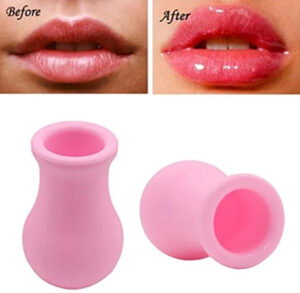Silicone items exist essentially everywhere in the form of kitchen utensils, medical devices, car parts, and electronics. But how are those silicone products made? If it has been a secret requirement in your wondering, then you are very much in the right place.
In this guide, we will take you through the whole process from selecting the most appropriate silicone material for your purpose to the manufacture of durable products of the highest quality.
We are also glad to introduce you to InSilicone, a great company in the premium silicone product manufacturing business that will help you turn your ideas into reality. So let’s dive!
What is Silicone and Why is it so Popular?
Silicone is a man-made synthetic polymer that is derived from silica, the naturally occurring ingredient in sand. It has some incredible qualities such as:
- Heat Resistance: Extreme temperatures can be withstood without degrading.
- Flexibility: Soft, elastic, and durable.
- Non-toxic: Safe food application or medical applications.
- Waterproof: perfect for use as sealant and insulating.
Because of its properties, silicone product manufacturing has spread across all industries – from healthcare down to construction.
Silicone Product Manufacturing: Steps to Make the Perfect Silicone Item
Step 1: Selecting the Right Silicone Material
Any good product commences with good materials. The types of silicone include the following:
- Liquid silicone rubber (LSR): Suitable for injection molding and volume production.
- High-consistency rubber (HCR): Good for compression molds and durable goods.
- Room-temperature vulcanizing (RTV) silicone: Typically used for small mold-making or prototyping applications.
Pro tip: Choose the silicone type that fits the needs of your actual product; for instance, LSR is used for medical-grade items, while HCR is worthy of consideration for automotive parts.
Step 2: Designing the Mold
Mold is the blueprint for your silicone product, with every detail calibrated into it. Here lies the process:
- Concept creation: Get CAD (Computer Aided Design) software to design your product.
- Mold materials: Aluminum (for prototypes) is good, whereas Steel is selected for greater production runs.
- CNC machining: Computerized machines cut metal to form the mold.
Pro tip: Be precise, the wrong design could potentially ruin thousands of products.
Step 3: Preparing the Silicone for Molding
Now, the next step is to touch them. The silicone is to be processed differently according to the method adopted:
- For liquid silicone rubber (LSR): Pre-mix the material, then auto-inject the material into the mold cavities.
- For high-consistency rubber (HCR): Knead and pigment the silicone, then mold.
- For RTV silicone: Mix base and curing agent very well to avoid bubbles.
If pigments were added, make sure that they have good heat resistance so that they cannot fade during the cure.
Step 4: Molding the Silicone
Different silicone products making processes:
- Injection molding: Most suited for mass production. LSR is injected into a closed mold, filling every detail.
- Compression molding: Commonly used in automotive and industrial products. Silicone is laid in hot mold and pressed.
- Transfer molding: Best used for those products with inserts such as gaskets or seals. The silicone is injected under pressure into the mold cavity.
Pro tip: Fast and effective injection molding leaves compression molding for good control over large, thick products.
Step 5: Curing the Silicone
Curing dries the silicone to the end state. There are two basic methods of curing:
- Heat curing: It is the conventional method; the molds are put in ovens to cure the silicone at 150-200°C.
- Room temperature curing: It is used for RTV silicone, which hardens at room temperature.
The curing time depends on the thickness of the product. Thin articles cure quickly, while thick articles need a longer exposure to heat.
Step 6: Demolding and Finishing
Once cured, silicone products are taken out of their molds. Now it’s time for the finishing touches:
- Trimming: Removal of excess silicone referred to as “flash.”
- Polishing: Smoothing of surfaces for a clean finish.
- Post-curing: Additional heating of some products to remove the remaining chemicals.
Step 7: Quality Inspection
No product leaves the factory without clearing the quality checks. Manufacturers carry out testing for the following:
- Dimensional accuracy: Laser measurements or micrometers.
- Tensile strength: To test flexibility and durability.
- Heat and chemical resistance: This testing applies especially to industrial and medical products.
Step 8: Packaging and Shipping
Packaging and shipping finally ensue once customer requirements are fulfilled. Sterile packing is essentially a requirement for any food-grade or medical-grade silicone product.
Choosing the Best Silicone Product Manufacturer: Meet InSilicone
Affordability, reliability, and durability—this is what InSilicone aims to give with efficient silicone product manufacturing. Selection of a manufacturing partner to translate your idea into reality is very crucial, and this is where InSilicone comes in. They provide a range of high-quality silicone kitchenware, baby products, and everyday accessories.
Why InSilicone?
 Expertise: Numerous years in the manufacturing of silicone products across industries.
Expertise: Numerous years in the manufacturing of silicone products across industries. - Customization: They offer solutions as per your requirements.
- Quality assurance: There are rigorous quality checks for every product.
- Sustainability: Eco-friendly processes are given priority in their manufacturing.
Ready to Manufacture High-Quality Silicone Products?
Silicone product manufacturing has become a DIY project for many people globally. Learning how to manufacture these products with customization and a touch of personalization is a fun activity. Silicone product manufacturers ensure that your product is of high quality and is safe for you and your family.
Partner with InSilicone for precision and excellence in silicone product development. InSilicone’s expert team is ready to assist you with the development of industrial components or consumer goods. Connect with us today to make your concept a reality!



